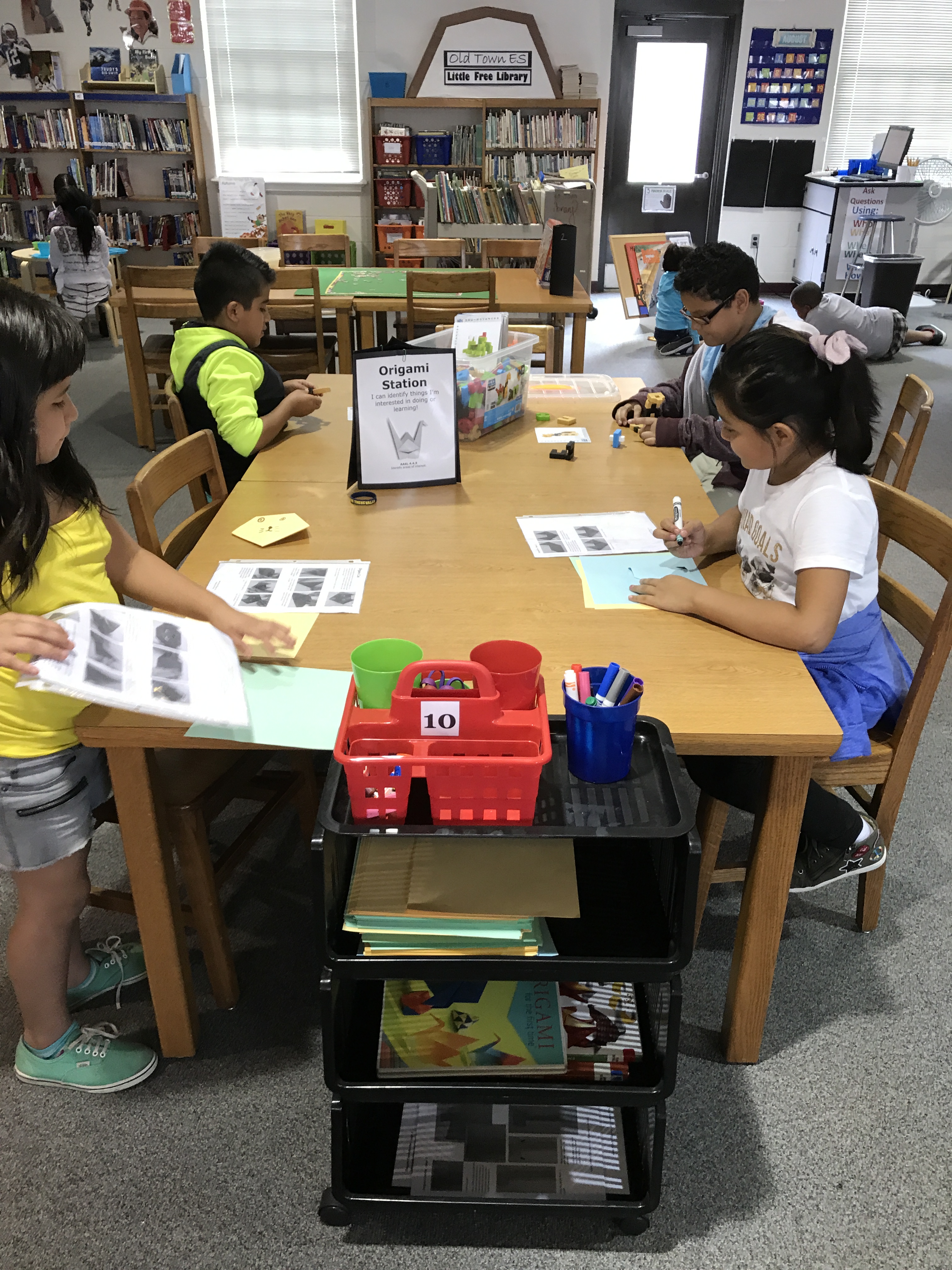Advance Planning - Stations & Maker Spaces
I always start with the end in sight. I wish I could remember what class I was taking when I realized this was a great way to operate! So. . . What do I want this station work to look like when it's fully implemented?
I want the students to
I also need a couple of station ideas with which to start. Hopefully, these can come from something I already have at the library - like games or puzzles. Yes, those are simple things. They won't win any prizes for deep thinking activities, but what we are trying to establish is routine and procedure. We'll develop those thinking skills after routines are automated.
Week one (and probably two and three) in year one:
When I see that the students are handling this well, then I add a couple of things.
I know this seems slow and drawn out. It is slow and drawn out, but every time I've tried to speed it up, I've regretted it and had to back up and slow things down.
Up next - Students move to the stations!

I want the students to
- Choose a station independently.
- Work with their peers cooperatively.
- Use voice levels appropriate for inside.
- Clean up thoroughly. ;)
- Start, pause, and stop as needed for other things that may happen (like class ending, a fire drill, checking out books, etc.)
I also need a couple of station ideas with which to start. Hopefully, these can come from something I already have at the library - like games or puzzles. Yes, those are simple things. They won't win any prizes for deep thinking activities, but what we are trying to establish is routine and procedure. We'll develop those thinking skills after routines are automated.
Week one (and probably two and three) in year one:
- I assign the students seats. I like groups of three, and I have the room to do 8 or 9 groups. If there are more kids in a class, then I can pull in some extra chairs for groups of four.
- We go over the library procedures again. My school is PBIS and our Eagles SOAR, so that's what I use. By the time I start stations at a school, the kids have heard the procedures enough they are starting to be routine. I've wondered if I go over them too much. BUT I only see kids once a week with the odd class missing for a variety of reasons and goodness knows who absent each week. Well, I'd rather be safe than sorry. Here's a checklist I've used in the past. I go over it at the beginning of class quickly.
- This week we introduce stations. Stations are at the table and they are all about the same.Each table may have a different game or puzzle. We talk more about voice level, staying at your station, how to ask questions if they need help, etc. We probably won't even check out this week. (Next week, I'll rotate that item and we'll add table check out).
- I let the students know when we have about five minutes left. Review what a clean station should look like, and then give them their last few minutes. Before I signal for cleanup.
- Then we go back to the checklist. As we go through each section, the students get to decide how to mark each item before we tally it up and give it to the teacher.
When I see that the students are handling this well, then I add a couple of things.
- Week two or three, we will start to check out by tables. For me, this is one of the huge advantages of stations. I can realistically only help a few students at a time. Everyone is occupied to free me up to help with those students choosing books and checking out.
- Week three, four, or five, I start to add other activities into the mix. I may alternate tables with puzzles and games. And still rotate those activities each week for a few weeks. I work stations up to having something different on each table. When we can do this, I know we are ready to move on.
I know this seems slow and drawn out. It is slow and drawn out, but every time I've tried to speed it up, I've regretted it and had to back up and slow things down.
Up next - Students move to the stations!

Comments
Post a Comment